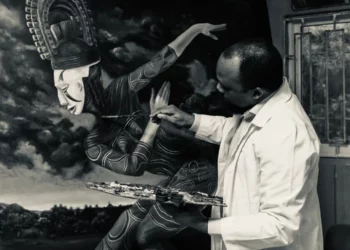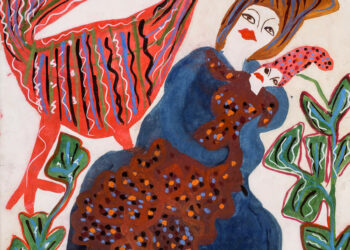Abdias Nascimento at the Mata Gallery, Inhotim, Brazil.
The title of this fourth act of the program, ‘Abdias Nascimento and the Museu de Arte Negra’ (Abdias Nascimento and the Black Art Museum) features an important part of the intellectual and political legacy of Abdias Nascimento. While working as curator of the Black Arts Museum project, he began developing his own creative work (painting), and from 1968 on, he exhibited widely in the U.S., Brazil and abroad. He received national and international honours for his work, including UNESCO’s special Toussaint Louverture Award for contribution to the fight against racism in 2004. He was officially nominated for the 2010 Nobel Peace Prize.
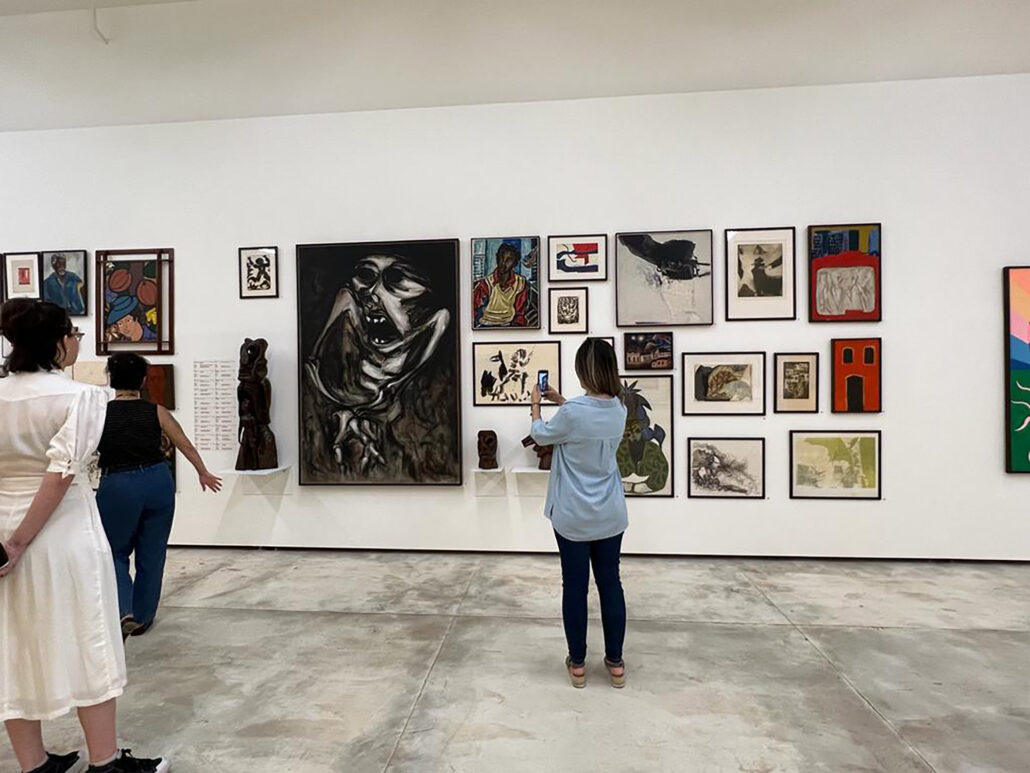
Installation view of ‘Abdias Nascimento and the Museu de Arte Negra’ (Abdias Nascimento and the Black Art Museum). © Suzette Bell-Roberts
His proposal of Quilombismo, present in the three previous exhibition acts, has reverberated beyond them and gains prominence in this fourth act. Originally published in 1980, the thesis presented by Nascimento at the Second Congress of Black Culture in the Americas in Panama presents quilombos as the roots of the political mobilization of the Black population.
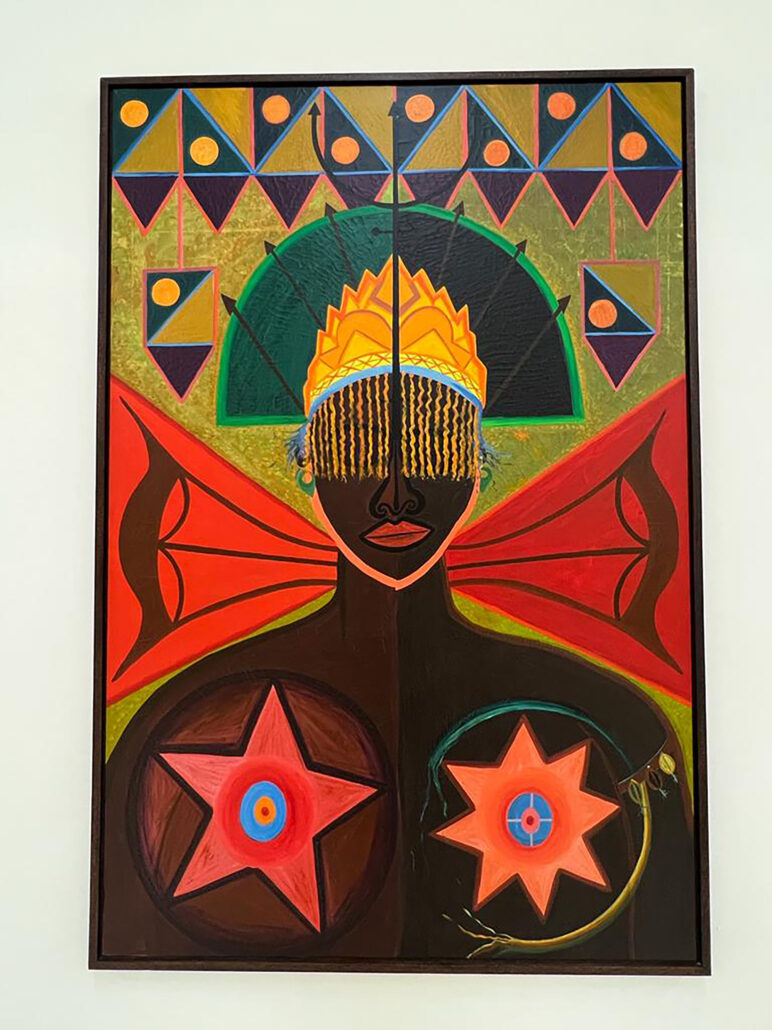
Abadias Nascimento (1914-2011), Brazil Oxum in ecstasy, 1975. Acrylic on canvas. Collection Museu de Arte Negra – IPEAFRO.
The foundations of Quilombismo lie in African and Afro-Brazilian cultures and histories and articulate the struggle for a state capable of organizing a pluri-ethnic and multicultural society in a social, political, and economically egalitarian way.
“Ensuring the human condition of the Afro-Brazilian people, treated and defined in a humiliating and oppressive way for so many centuries, is the ethical foundation of quilombismo,” said Nascimento when, after thirteen years of exile between the U.S. and African countries, he returned to Brazil to continue his fight and to found, together with Elisa Larkin Nascimento, the Instituto de Pesquisas e Estudos Afro-Brasileiros -IPEAFRO (Institute for Afro-Brazilian Research and Studies), in 1981.
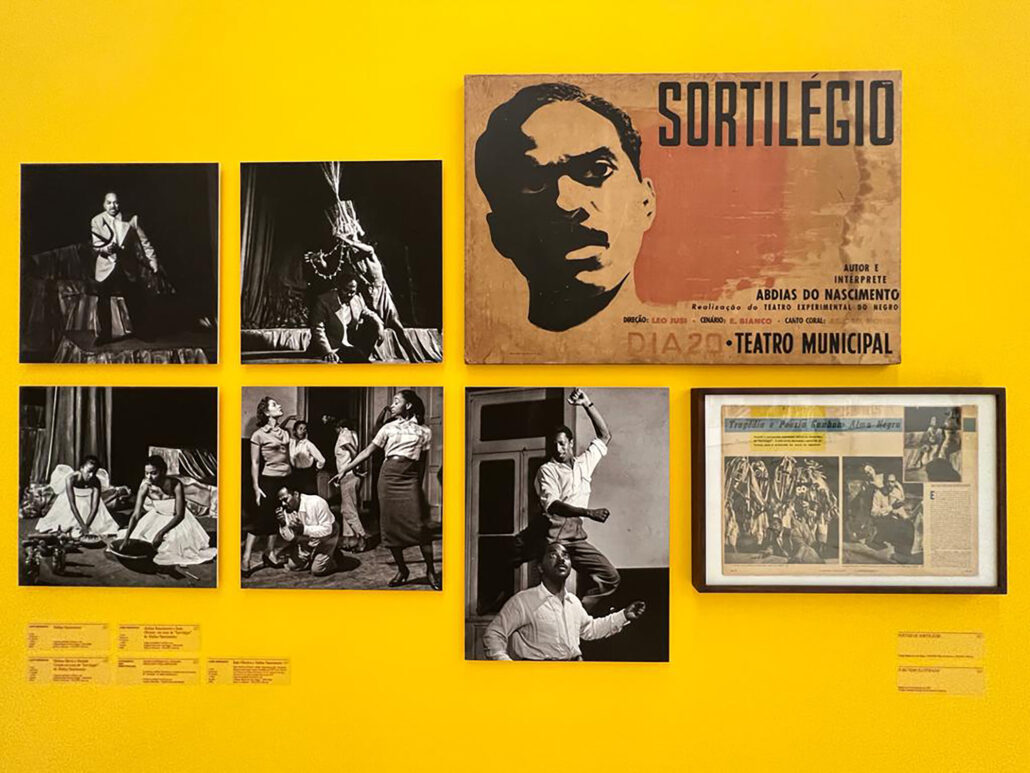
Installation view of ‘Abdias Nascimento and the Museu de Arte Negra’ (Abdias Nascimento and the Black Art Museum). © Suzette Bell-Roberts
The values advocated by Nascimento, expressed in his actions, reflections, and commitments, are consolidated into the thesis of Quilombismo. From the militancy of his youth, when he organized the Congresso Afro-Campineiro (Afro-Campineiro Congress) in 1938 from the poetic adventure of Santa Hermandad Orquídea, through the creation and performances of the Teatro Experimental do Negro (Black Experimental Theater) to the editions of the newspaper Quilombo and the creation of the Museu de Arte Negra, reparation policies toward a more just society permeated his endeavours.
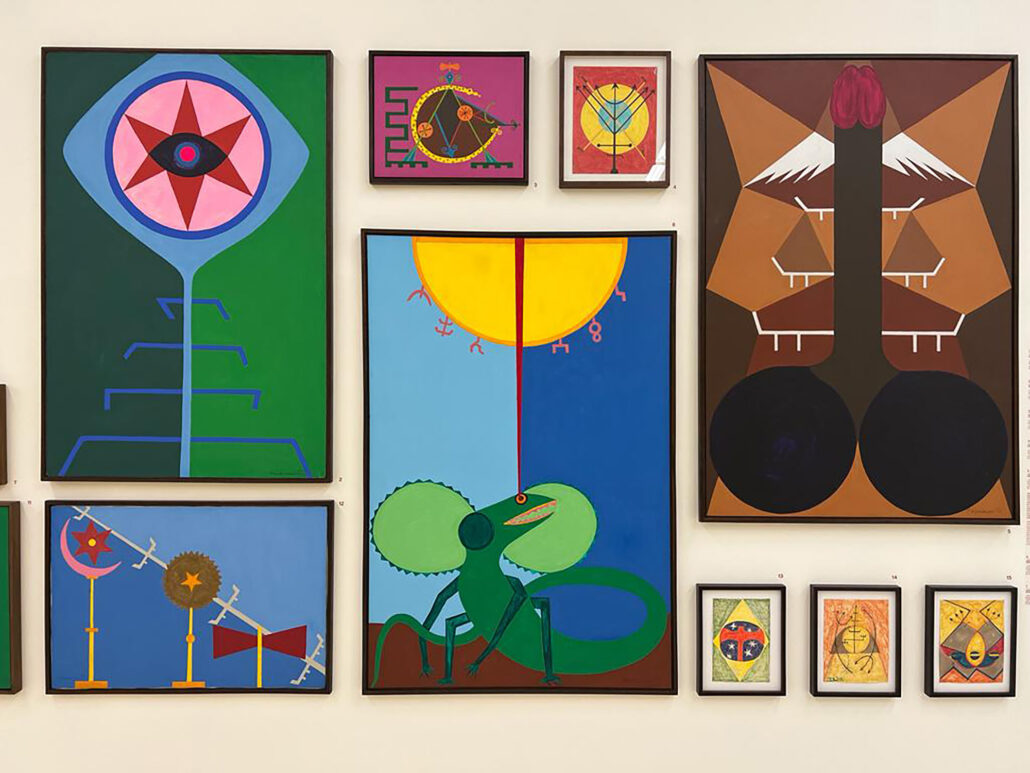
Installation view of ‘Abdias Nascimento and the Museu de Arte Negra’ (Abdias Nascimento and the Black Art Museum). © Suzette Bell-Roberts
In his pictorial production, the artist worked with the concepts of “Afro-Brazilian Theogony” and “Contemporary Ritual Symbols,” examining, affirming, and valuing the knowledge brought by African traditions, their conception of life and philosophy of the universe. In his political work as a federal deputy (1983-1987) and as a senator (1991, 1997-1999), he developed the discourse that emerged from the congresses and seminars he held and participated in nourishing his vigorous participation in the Black movement.

Abadias Nascimento (1914-2011), Brasil Xangô Takes Over, 1975. Acrylic on canvas. Collection Museu de Arte Negra – IPEAFRO.
The only Black parliamentarian with anti-racist activities in the legislature before the Constituent Assembly (1983-1987), he proposed defining racial discrimination as a qualified crime and the 20th of November as the National Black Awareness Day, in addition to a set of affirmative policies that included the teaching of African and African Diaspora culture and history, as well as gender-based racial quotas (half for Black women) in education, the labour market, diplomatic representation, and civil and military public service.
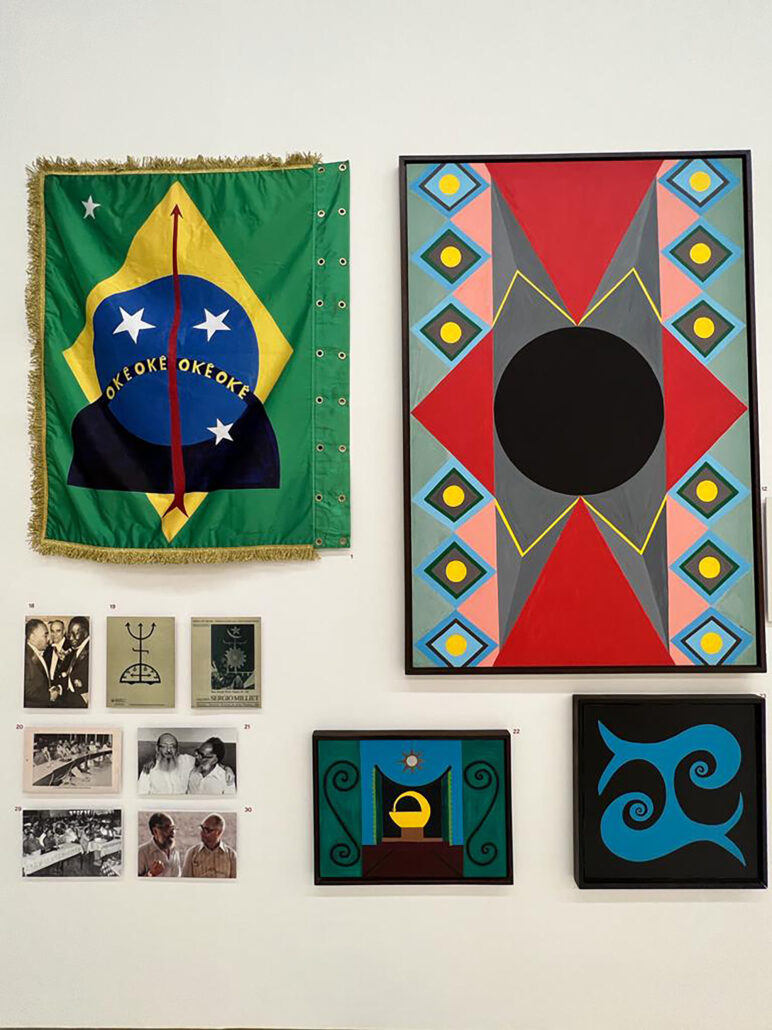
Installation view of ‘Abdias Nascimento and the Museu de Arte Negra’ (Abdias Nascimento and the Black Art Museum). © Suzette Bell-Roberts
The exhibition is presented by Inhotim and the Instituto de Pesquisas e Estudos Afro-Brasileiros (IPEAFRO – Institute for Afro-Brazilian Research and Studies) and closes in September, 2024. For more information, please visit Inhotim.
Suzette Bell-Roberts is Co-founder and Digital Editor of ART AFRICA magazine.

